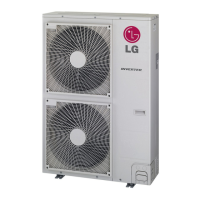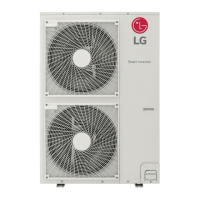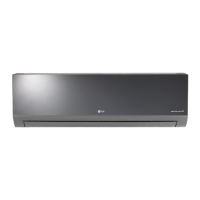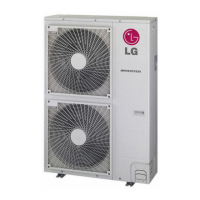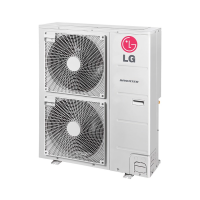
Do you have a question about the LG MULTI F LMU303HV and is the answer not in the manual?
| Cooling Capacity | 30, 000 BTU/h |
|---|---|
| Refrigerant | R410A |
| Type | Multi Split |
| Compressor Type | Inverter |
| Indoor Unit Noise Level | Varies depending on the indoor unit model |
| Indoor Unit Dimensions (WxHxD) | Varies depending on the indoor unit model |
| Indoor Unit Weight | Varies depending on the indoor unit model |
| Indoor Unit Type | Multiple (compatible with various LG indoor units) |
Provides critical safety guidelines for installing the unit, including electrical and physical safety.
Outlines safety precautions for operating the air conditioner, including handling and maintenance.
Guidelines for selecting optimal installation locations for outdoor and indoor units, considering environmental and operational factors.
Details safety standards for refrigerant concentration in occupied spaces according to ASHRAE.
Outlines limitations on connecting indoor units and piping lengths for Multi F and Multi F MAX systems.
Step-by-step instructions for performing correct flaring on copper pipes to prevent refrigerant leaks.
Details the correct procedure for brazing refrigerant pipes, emphasizing safety and proper techniques.
Instructions on connecting refrigerant piping between the Multi F outdoor and indoor units, including port identification.
Steps for connecting field piping to the outdoor unit, including managing connections and using connection sockets.
Guidelines for connecting refrigerant piping to Multi F MAX outdoor units, covering various installation directions.
Procedures for connecting refrigerant piping from Branch Distribution Units to indoor units, including port identification.
Procedures for performing a triple leak and pressure test on the refrigerant system to ensure it is leak-free.
Steps for performing deep evacuation to remove moisture and non-condensable gases from the refrigerant system.
Detailed procedure for triple evacuation, essential for Multi F MAX systems to ensure thorough evacuation.
Instructions for calculating and adding the correct refrigerant charge, including trim charge calculations for piping length.
Information on refrigerant safety standards and calculating refrigerant concentration limits to prevent hazards.
Procedures for performing a test run to evaluate system performance, including checking refrigerant charge and temperatures.


